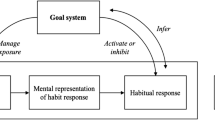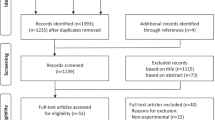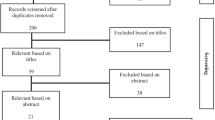Abstract
Purpose
This study aimed to assess car-driving behaviors and attitudes and to measure the changes in the knowledge and behavioral practices associated with road safety measures of 1333 randomly selected young-adult participants (aged 18–24 years) from Jazan University in Gizan city, Saudi Arabia.
Methods
Data were collected using cross-sectional survey and quasi experimental pre- and post-evaluation educational intervention study including structured questionnaire and take-home educational material.
Results
Results revealed that low compliance with the safety index significantly increased the risk of traffic injuries by 20% [OR = 0.80, 95% CI = (0.59–1.01)]. Whereas the medium category of the safety compliance index is significantly associated with an increasing number of injuries by 6% [OR = 0.94, 95% CI = (0.61–1.52)]. In contrast, both high and medium categories of risk behavior index increased the risk of traffic injuries [OR = 1.08, 95% CI = (0.82–1.43); OR = 0.80, 95% CI = (0.57–1.10), respectively]. Some improvement in risky behavioral practices was seen after the intervention including ‘not playing loud music’ [86.3%, (P = 0.05)], ‘not using mobile phones’ [89.4%, (P < 0.05)], and ‘not using unprofessional checkups of the car’ [71.5%, (P < 0.05)].
Conclusion
Ultimately, this unpleasant situation may recommend avoidance of these kinds of intermittent awareness programs; instead, embedding a continuous road safety learning within the life-long educational system as a better and more realistic intervention for reducing the number of road accidents and injuries. Further, establishing various modes of high-capacity city-link public transportation remains among the most recommended strategic and effective options that can curb road traffic injuries in the long run.

Similar content being viewed by others
References
Singh R, Singh HK, Gupta SC, Kumar Y. Pattern, severity and circumstances of injuries sustained in road traffic accidents: a tertiary care hospital-based study. Indian J Community Med. 2014;39:30–4.
Barrimah I, Midhet F, Sharaf F. Epidemiology of road traffic injuries in Qassim Region, Saudi Arabia: consistency of police and health data. Int J Health Sci, Qassim Univ. 2012;6(1):31–41.
Onyema CR, Oladepo O. Knowledge and attitude of safety belt use among professional drivers in a tertiary Nigerian institution. Int J Inj Contr Saf Promot. 2011;18(1):57–64.
Al-Maniri AA, Al-Reesi H, Al-Zakwani I, Nasrullah M. Road traffic fatalities in Oman from 1995 to 2009: evidence from police reports. Int J Prev Med. 2013;4(6):656–63 (PMCID: PMC3733033).
Chisholm D, Naci H. Road traffic injury prevention: an assessment of risk exposure and intervention cost-effectiveness in different world regions. WHO, Geneva. 2008; pp 4. https://www.who.int/choice/publications/d_2009_road_traffic.pdf?ua=1
Peden, M. Scurfield R, Sleet D, Mohan D, Hyder AA, Jarawan E, Mathers C. World Report on Road Traffic Injury Prevention. World Health Organization, Geneva, Switzerland, 2004; pp 27. https://www.who.int/publications/i/item/world-report-on-road-traffic-injury-prevention
Ifeoma PO, Kofoworola AO, Duro CD. Knowledge of commercial bus drivers about road safety measures in Lagos. Nigeria Ann Afr Med. 2013;12(1):24–39.
Hussain T, Shu LY, Sosorburam T, Adji AS, Khan AH, Raja AF. Road traffic accidents; an observational and analytical study exploring the hidden truths in Pakistan and South East-Asian Countries. Healthline. 2011;2(1):52–7.
Al-Khateeb GA. Analysis of accident data and evaluation of leading causes for traffic accidents in Jordan. Jordan J Civil Eng. 2010;4(2):76–94.
Jha N, Srinivasa DK, Roy G, Jagdish S. Epidemiological study of road traffic accident cases: a study from South India. Indian J Community Med. 2004;29(1):20–4.
Okafor PI, Odeyemi AK, Dolapo CD. Knowledge of commercial bus drivers about road safety measures in Lagos, Nigeria. Ann of Afr Med. 2013;12(1):35–9.
Manigandan R, Arunmozhi R. Road traffic accidents in Tamilnadu: a historical study. Indian Streams Res J. 2013;3(7):1–5.
Hatamabadi H, Vafaee R, Haddadi M, Abdalvand A, Esnaashari H, Soori H. Epidemiologic study of road traffic injuries by road user type characteristics and road environment in Iran: a community-based approach. Traffic Inj Prev. 2012;13:61–4.
Mishra B, Sinha MND, Sukhla SK, Sinha AK. Epidemiological study of road traffic accident cases from Western Nepal. Indian J of Community Med. 2010;35(1):115–21.
Crawford T, McGrowder D. Road traffic injury epidemic in jamaica: implications for governance and public policy. Asian Soc Sci. 2008;4(10):182–91.
Dixey RA. ‘Fatalism’, accident causation and prevention: issues for health promotion from an exploratory study in a Yoruba town. Nigeria Health Educ Res. 1999;14(2):197–208.
Ansari S, Akhdar F, Mandoorah M, Moutaery K. Causes and effects of road traffic accidents in Saudi Arabia. Public Health. 2000;114:37–9.
WHO. 2015. Violence and injury prevention. global status report on road safety 2015. Geneva (CH): world health organization; 2015. Available at: http://www.who.int/violence_injury_prevention/road_safety_status/2015/en/ Accessed 22 Feb 2018
Al-Naami MY, Arafah MA, Al-Ibrahim FS. Trauma care systems in Saudi Arabia: an agenda for action. Ann Saudi Med. 2010;30:50–8.
WHO. 2013. Road safety in the eastern Mediterranean Region, facts from the global status report on road safety 2013. Geneva (CH): world health organization; 2015. Available at: 2013. http://www.who.int/ violenceinjuryprevention/roadsafetystatus/2013 Accessed on 13 Oct 2017
Fylana F, Stradling S. Behavioural change techniques used in road safety interventions for young people. Revue Européenne de Psychologie Appliquée. 2014;64:123–9. https://doi.org/10.1016/j.erap.2014.02.003.
Kinnear N, Kelly S, Stradling S, Thomson J. Understanding how drivers learn to anticipate risk on the road: a laboratory experiment of affective anticipation of road hazards. Accid Anal Prev. 2013;50:1025–33.
McKenna F. (2010). Education in road safety. Are we getting it right? report number 10/113. The royal automobile club foundation (RAC). Available at: http://www.racfoundation.org/assets/rac_foundation/content/downloadables/education%20in%20road%20safety%20-%20mckenna%20-%20080910%20-%20report.pdf Accessed 20 August 2017
Assailly JP. Road safety education: what works? Patient Educ Couns. 2017;100(Suppl. 1):S24–9. https://doi.org/10.1016/j.pec.2015.10.017.
Praveen B, Madhukar S, Bevoor D, Gurupada KP. Effectiveness of structured teaching program on knowledge regarding road safety measures among higher primary school children at DRR school, Davangere. J Educ Res Med Teacher. 2015;3(1):22–3.
Peck RC. Do driver training programs reduce crashes and traffic violations?—a critical examination of the literature. IATSS Res. 2011;34:63–71. https://doi.org/10.1016/j.iatssr.2011.01.001.
Poulter DR, McKenna FP. Evaluating the effectiveness of a road safety education intervention for pre-drivers: an application of the theory of planned behavior. Br J Educ Psychol. 2010;80:163–81. https://doi.org/10.1348/014466509X468421.
Boulanger A, Hels T, Larsen L, Meng A, Orozova-Bekkevold I. (2009) Reporting tool for effects of a single campaign (Boulanger A, Meng A Eds). Brussels: IBSR-BIVV. Available at: file:///C:/Users/IT/Desktop/cast-wp2-deliverable-2.4.pdf. Accessed 22 August 2017
Issa Y. Effect of driver’s personal characteristics on traffic accidents in Tabuk city in Saudi Arabia. J Transport Lit. 2016;10(3):25–9. https://doi.org/10.1590/2238-1031.jtl.v10n3a5.
Al-Reesi H, Al-Maniri A. Road traffic injuries among young drivers in Oman. Oman Med J. 2014;29(5):313. https://doi.org/10.5001/omj.2014.85.
Al-Khaldi YM. Attitude and practice towards road traffic regulations among students of health sciences college in Aseer region. J Fam Community Med. 2006;13:109–13.
Alghnam S, Alkelya M, Alfraidy M, Al-bedah K, Albabtain IT, Alshenqeety O. Outcomes of road traffic injuries before and after the implementation of a camera ticketing system: a retrospective study from a large trauma center in Saudi Arabia. Ann Saudi Med. 2017;37(1):1–9. https://doi.org/10.5144/0256-4947.2017.1.
WHO. (2009). 2nd global status report on road safety. Geneva 2009, Available at: http://www.who.int/violence_injury_prevention/road_safety_status/en/index.html Accessed 18 July 2017
Jennissen AC, Peck J, Wetjen K, Hoogerwerf P, Harland KK, Denning MG. The safety tips for ATV Riders (STARs) programme: short-term impact of a school-based educational intervention. Inj Prev. 2015;21:166–72. https://doi.org/10.1136/injuryprev-2014-041408.
Huicho L, Taghreed A, Edmundo R, Ada P, Luis L, Diego L, Miranda J (2012). Evaluation of interventions on road traffic injuries in Peru: a qualitative approach. BMC Public Health, 2012;12:71 http://www.biomedcentral.com/1471-2458/12/71
Hassan HM, Al-Faleh H. Exploring the risk factors associated with the size and severity of roadway crashes in Riyadh. J Saf Res. 2013;47:67–74.
Khan ZU, Al Asiri KM, Iqbal J. Injury patterns from road traffic accidents. Pakistan J Med Sci. 2010;26:394–7.
Al-Shammari N, Bendak S, Al-Gadhi S. In-depth analysis of pedestrian crashes in Riyadh. Traffic Inj Prev. 2009;10:552–9.
Mansuri FA, Al-Zalabani AH, Zalat MM, Qabshawi R. Road safety and road traffic accidents in Saudi Arabia: a systematic review of existing evidence. Saudi Med J. 2015;36(4):418–24. https://doi.org/10.15537/smj.2015.4.10003.
Al-Naami MY, Arafah MA, Al-ibrahim FS. Trauma care systems in Saudi Arabia: an agenda for action. Ann Saudi Med. 2010;30(1):50–8.
Treviño-Siller S, Pacheco-Magaña LE, Bonilla-Fernández P, Rueda-Neria C, Arenas-Monrea L. An educational intervention in road safety among children and teenagers in Mexico. Traffic Inj Prev. 2017;18(20):164–70. https://doi.org/10.1080/15389588.2016.1224344.
Elshinnawey MA, Fiala LE, Abbas MA, Othman N. Road traffic injuries in Saudi Arabia, and its impact on the working population. J Egypt Public Health Assoc. 2008;83:1–14.
Ghaffar UB, Ahmed SM. A review of road traffic accident in Saudi Arabia: the neglected epidemic. Indian J Forensic Community Med. 2015;2(4):242–6.
Masuria MG, Isab KAM, Tahir MRM. Children, youth and road environment: road traffic accident. Procedia Soc Behav Sci. 2012;38:213–8.
Chaudhary BL, Singh D, Tirpude BH, Sharma RK, Veena M. Profile of road traffic accident cases in Kasturba hospital of MGIMS, Sevagram Wardha. Maharasthra Medico-legal Update. 2005;5(4):127–33.
WHO. 2017. Road traffic injuries. Fact sheet. Available at: http://www.who.int/mediacentre/factsheets/fs358/en/ Accessed 21 September 2018
Bates LJ, Davey J, Watson B, King MJ, Armstrong K. Factors contributing to crashes among young drivers. Sultan Qaboos Univ Med J. 2014;14(3):297–305.
Dissanayake S, Lu J. Analysis of severity of young driver crashes: sequential binary logistic regression modeling. J Transp Res Board. 2002;1784:108–14. https://doi.org/10.3141/1784-14.
Ramisetty-Mikler S, Abdulkarim A. Attitudes and behaviors towards risky driving among adolescents in Saudi Arabia. Int J Pediatr Adolesc Med. 2016;2016(3):55–63.
Ivers R, Senserrick T, Boufous S, Stevenson M, Chen H-Y, Woodward M, Norton R. Novice drivers’ risky driving behavior, risk perception, and crash risk: findings from the DRIVE study. Am J Public Health. 2009;99(9):1638–44.
Kumar S, Toshniwal D. A data mining framework to analyze road accident data. J Big Data. 2015;2(26):1–18. https://doi.org/10.1186/s40537-015-0035-y.
Singh SK. Road accident analysis: a case study of Patna City. Urban Transport J. 2004;2(2):60–75.
Bendak S. Seat belt utilization in Saudi Arabia and its impact on road accident injuries. Accid Anal Prev. 2005;37(2):367–71.
Hassen A, Godesso A, Abebe L, Girma E. Risky driving behaviors for road traffic accident among drivers in Mekele city Northern Ethiopia. BMC Res Notes. 2011;4:535.
Simons-Morton BG, Ehsani JP, Gershon P, Klauer SG, Dingus TA. Teen driving risk and prevention: naturalistic driving research. Safety. 2017;2017(3):29.
Fernandes R, Job RS, Hatfield J. A challenge to the assumed generalizability of prediction and countermeasure for risky driving: different factors predict different risky driving behaviors. J Saf Res. 2007;38(1):59–70.
Orton E, Whitehead J, Mhizha-Murira J, Clarkson M, Watson MC, Mulvaney CA, Staniforth JU, Bhuchar M, Kendrick D. School-based education programmes for the prevention of unintentional injuries in children and young people. Cochrane Database Syst Rev. 2016. https://doi.org/10.1002/14651858.CD010246.pub2 (Art No: CD010246).
Hassen GA, Abebe L, Girma E. Risky driving behaviors for road traffic accident among drivers in Mekele City. Northern Ethiopia BMC Res Notes. 2011;2011(4):535. https://doi.org/10.1186/1756-0500-4-535.
Cuenen A, Brijs K, Brijs T, Van Vlierden K, Daniels S, Wets G. Effect evaluation of a road safety education program based on victim testimonials in high schools in Belgium. Accid Anal Prev. 2016;94:18–27. https://doi.org/10.1016/j.aap.2016.05.006.
Helman S, Ward HA, Christie N, McKenna, F. (2011) Using behavioural measures to evaluate route safety schemes: Detailed guidance for practitioners. Project report PPR548. Crowthorne: TRL. Available at: file:///C:/Users/IT/Desktop/using_behavioural_measures_to_evaluate_route_safety_schemes.pdf. Accessed 21 Sep 2017
Hoekstra T, Wegman F. Improving the effectiveness of road safety campaigns: current and new practices. IATSS Res. 2011;34(2):80–6. https://doi.org/10.1016/j.iatssr.2011.01.003.
Gupta M, Menon GR, Devkar G, Thomson H. Regulatory and road engineering interventions for preventing road traffic injuries and fatalities among vulnerable (non-motorised and motorised two-wheel) road users in low- and middle-income countries. Cochrane Database Syst Rev. 2015. https://doi.org/10.1002/14651858.CD011495 (Art No: CD011495).
Davies GR, Roberts I. Is road safety being driven in the wrong direction? Int J Epidemiol. 2014;43(5):1615–23. https://doi.org/10.1093/ije/dyu103.
Ker K, Roberts I, Collier T, Beyer F, Bunn F, Frost C. Post-licence driver education for the prevention of road traffic crashes: a systematic review of randomized controlled trials. Accid Anal Prev. 2005;37:305–13.
Author information
Authors and Affiliations
Corresponding author
Ethics declarations
Conflict of interest
The authors declare that they have no conflict of interest.
Rights and permissions
About this article
Cite this article
A. Rahim, Be.E., Bani, I. & Yagoub, U. Awareness level of safe driving knowledge and practice of specific population drivers: behavioral assessment and educational intervention. Eur J Trauma Emerg Surg 48, 4119–4129 (2022). https://doi.org/10.1007/s00068-022-01948-5
Received:
Accepted:
Published:
Issue Date:
DOI: https://doi.org/10.1007/s00068-022-01948-5




